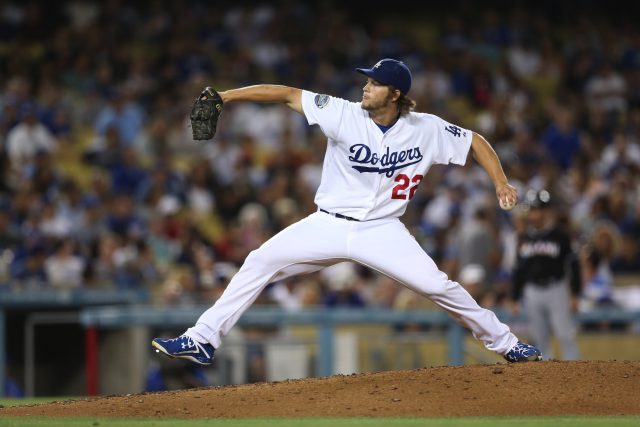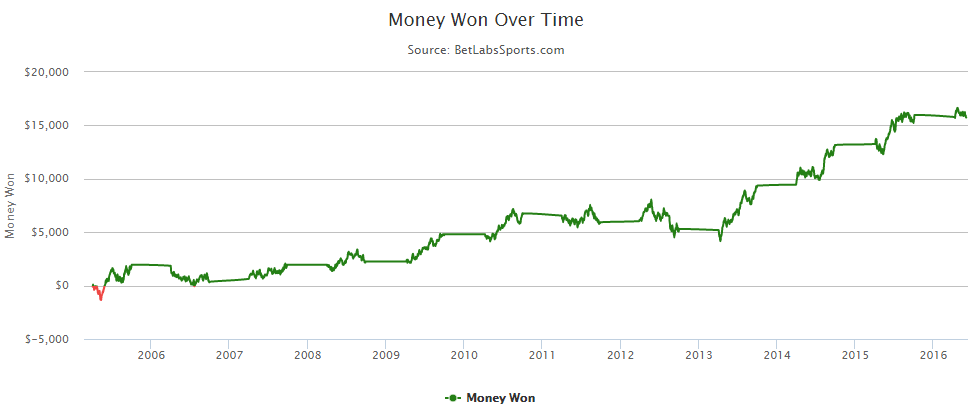
How Bettors Can Win By Tracking Starting Pitcher Walk Rates
Ever since Michael Lewis published his now famous novel Moneyball, the baseball community has been enamored with sabermetrics. The love for advanced statistics has emerged as one of this century’s greatest obsessions, joining the likes of yoga pants, gluten-free diets, craft beers and microaggressions.
For anybody who didn’t bother to read Moneyball or watch the film adaptation starring Brad Pitt, the story focuses on Billy Beane, the general manager of the Oakland Athletics. Following a 102-win season, Oakland was attempting to replace three of their best players (Jason Giambi, Johnny Damon and Jason Isringhausen) despite lacking the financial resources major market teams. In order to keep his team competitive Beane needed to exploit market inefficiencies, focusing predominantly on the way other major league clubs undervalued the walk.
[ Receive steam moves, smart money, contrarian plays and our profitable Best Bet picks ]
Although many people will argue the validity of the statement, Moneyball surmises that a walk is just as valuable as a hit. Without putting the ball in play, you’re able to take a free base. Much like any of the Real Housewives, these players get paid to do absolutely nothing. However, somehow people still seem to downplay the importance of walks — especially when betting on a starting pitcher.
Walk rate (BB%) measures how often a hitter walks on a per plate appearance basis, and can easily be found by dividing total walks issued by total batters faced. According to FanGraphs, a walk rate of 7.7% is considered average. You can see the breakdown of each level in the table below.
| Rating | BB% |
|---|---|
| Excellent | 4.5% |
| Great | 5.5% |
| Above Average | 6.5% |
| Average | 7.7% |
| Below Average | 8.0% |
| Poor | 8.5% |
| Awful | 9.0% |
Based on this information, I wanted to prove that pitchers with low walk rates were profitable and that bettors should be fading pitchers with high walk rates. Using the historical archive that powers Bet Labs, I wanted to look at games where one pitcher’s walk rate was above average (less than 7.7%) and the other pitcher’s was below average (more than 7.7%).
To be clear, this references the pitchers walk rate for the current season at the time the game was being played. It does not reference the walk rate for their career.
My research found that pitchers with an above average walk rate had won 54.2% of their games since 2005. For bettors, that wasn’t necessarily as profitable as it may sound. Since the pitcher with the superior walk rate closed as the favorite in 55.5% of their games, the return on investment (ROI) was only +1.3%. This was still meaningful information due to the massive sample size (over 13,000 games) and consistent year-to-year results.
Going one step farther, I wanted to see whether pitchers with “great” walk rates were even more lucrative. My analysis found that pitchers with a walk rate of less than 5.5% had produced a 2.5% ROI since the start of the 2005 season. Pitchers with an “excellent” walk rate (less than 4.5%) had produced a 3.2% ROI. Although none of these numbers were astounding, it was fascinating to know that simply betting on every pitcher with an above average walk rate has been a profitable strategy. This was a clear edge that could easily be exploited by bettors.
While doing data analysis for our annual MLB Betting Against the Public report, I found that “elite” teams had been highly overvalued. Square bettors habitually gravitate towards the league’s top teams, and this has created contrarian value taking their opponents. Knowing this information, I believed that the top control pitchers would have exponentially more value against the league’s top teams.
Many of the league’s top offenses (like the Boston Red Sox, Chicago Cubs, Toronto Blue Jays and Washington Nationals) are also among the league leaders in walks. By minimizing the number of base on balls, pitchers are able to level the playing field.
Just like in our betting against the public report, I decided that teams with a winning percentage of at least 60% would be defined as elite. After that, I examined how decreasing walk rates impacted the return on investment.
| Walk Rate | Record | Units Won | ROI |
|---|---|---|---|
| All | 3063-3275 | +176.10 | 2.8% |
| <9.0% | 2286-2317 | +189.96 | 4.1% |
| <8.5% | 2070-2069 | +173.94 | 4.2% |
| <8.0% | 1835-1811 | +164.63 | 4.5% |
| <7.7% | 1672-1599 | +187.52 | 5.7% |
| <6.5% | 1009-906 | +150.50 | 7.9% |
| <5.5% | 518-449 | +83.97 | 8.7% |
| <4.5% | 216-173 | +48.61 | 12.5% |
As you can see, there’s a direct correlation between lower starting pitcher walk rates and increasing returns for moneyline bettors. This was illuminating information, but it only stoked the fire further. Next, I wanted to know whether this information could be translated to the total. Specifically, I believed that the under would perform well when both pitchers had low walk rates while the over would perform well when both pitchers had high walk rates. Spoiler alert: I was right.
With a sample size of over 4,000 games, I found that the under had produced a 3.8% when both pitchers had a walk rate of 7.0% or lower. The return on investment increases when both pitchers have lower walk rates, but the sample size shrinks significantly.
The screenshot below displays the year-by-year performance of the under when both pitchers have a walk rate of 7.0% or lower.
That system has the type of consistent success that we preach in winning betting systems, and it has continued to be profitable in recent history. Since the start of the 2013 season, this basic strategy has produced a 6.7% ROI with well over a thousand past game matches.
On the flip side, we found that it was even more lucrative to bet the over when both pitchers have control problems. Since 2005, the over has produced a 9.5% ROI when both pitchers have a walk rate of at least 10%. When we eliminate all games where the closing total is more than 10, the ROI increases to 12.2%. That makes sense since historically the over has performed well in games with low totals while the under has performed well in games with high totals.
During the 2016 season pitchers with elite control have continued to thrive, while wild pitchers have been highly profitable to fade. At the time of publication, Clayton Kershaw, Josh Tomlin, Noah Syndergaard, Mike Fiers, Zack Greinke and Ricky Nolasco were the only pitchers with “excellent” walk rates, with Masahiro Tanaka, Bartolo Colon and Jordan Zimmermann just outside the range.
Conversely bettors should be wary of Francisco Liriano, Tom Koehler, Yordano Ventura and Danny Salazar — all of whom have walk rates in the double figures. Walk rate doesn’t need to be the only statistic that you examine before betting on a starting pitcher, but it’s clearly one of the most important.
Looking for the latest odds, injuries and public betting trends? Don’t forget to bookmark our free MLB odds page for all of your sports betting needs.
Have any questions for the staff at Sports Insights? Utilize our live chat to speak with a customer service representative or e-mail us at help@sportsinsights.com.


Brian
06/08/2016 at 10:37 amOne problem I have is finding a website that has walk rate. I know how easy it is to calculate but using walks per nine is much easier to find. I spent an hour looking for a website that has it and could not find one. If you know of a website where walk rate is calculated I would love to know.
David Solar
06/08/2016 at 11:29 amWe automatically track that in Bet Labs, but you can also find those stats at FanGraphs: http://www.fangraphs.com/leaders.aspx?pos=all&stats=pit&lg=all&qual=y&type=1&season=2016&month=0&season1=2016&ind=0&team=0&rost=0&age=0&filter=&players=0&sort=8,a
Jack
06/12/2016 at 2:40 amGreat article. One point of clarification. Taking pitchers with low walk rates makes sense, does opponent’s pitcher walk rate matter? I think it does. I wonder what the ROI looks like if you focus on taking games with top third low BB% pitcher against bottom third high BB% pitcher? I suspect this should be very lucrative.